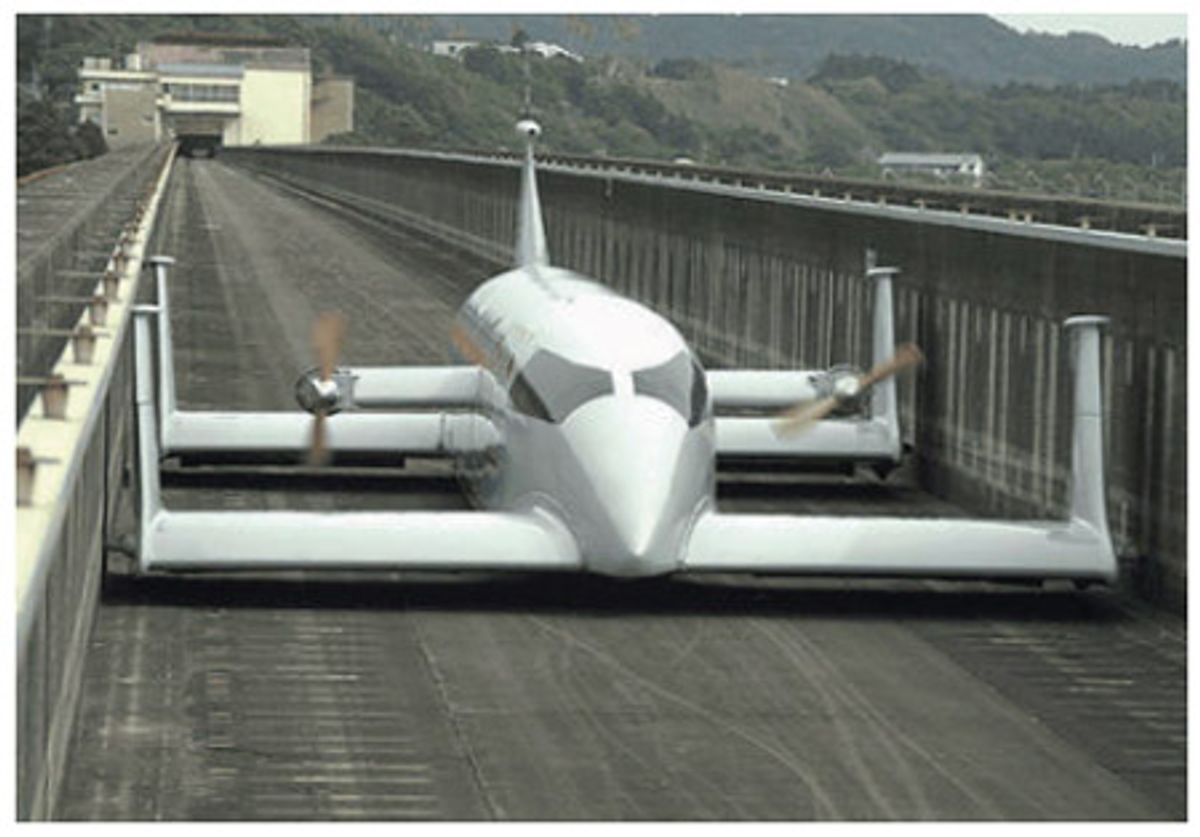Japanese prototype of a train that levitates on cushions of air.
High speed trains are huge in Asia, but barring a catastrophe, most of them are designed to stay firmly on the ground, running on rails. There are plenty of good reasons not to run on rails, though, one of which is that you can go much faster without all that friction. This is the idea behind maglev trains, but there’s still a lot of wind drag that crops up between the bottom of a maglev train and its track that makes them less efficient (which combined with other problems make maglevs very costly).
A ground-effect vehicle takes advantage of this fast-moving air and uses some stubby little wings to fly just above the ground, like a maglev without the mag. This is a tricky thing to do, since you have to control the vehicle more like an airplane than a train, meaning that you have to deal with pitch, roll, and yaw and not just the throttle. A Japanese research group led by Yusuke Sugahara at Tohoku University has built robotic prototype of a free flying ground-effect vehicle [photo above] that they’re using to test an autonomous three axis stabilization system:
The researchers are looking to use this robot to generate a dynamic model of how vehicles like these operate, which they hope to apply to a manned experimental prototype train [first photo at the top] that can travel at 200 kilometers per hour in a U-shaped concrete channel that keeps it from careening out of control.
Later, the plan is that the same technology can scale and power a large commuter rail system called the Aero Train [concept below]. If this is the future of commuting, we’ll be literally flying to work some day.
Sugahara and his colleagues describe the project in a paper, “Levitation Control of Experimental Wing-in-Ground Effect Vehicle along Z Axis and about Roll and Pitch Axes,” presented today at the IEEE International Conference on Robotics and Automation (ICRA), in Shanghai.
Evan Ackerman is a senior editor at IEEE Spectrum. Since 2007, he has written over 6,000 articles on robotics and technology. He has a degree in Martian geology and is excellent at playing bagpipes.






